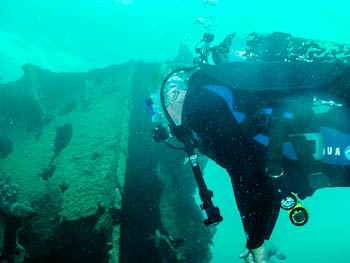
Tenaya
October
2012
Part Four
WWII Relics
Espiritu Santo, Vanuatu
| |
| HOME |
| About Tenaya |
| About Us |
| Latest Update |
| Logs from Current Year |
| Logs from Previous Years |
| Katie's View |
| Route Map |
| Links |
| Contact Us |
![]()
October 20, 2012
The island of Espiritu Santo is littered with WWII relics. A quonset hut here, rusting bits of crashed plane there. Massive amounts of heavy equipment were bulldozed into the sea by departing Americans and the SS President Coolidge, a luxury liner turned troop carrier, sunk meters from shore. Exploring the jungly interior and wreck strewn waters of Santo allows a glimpse into the past.
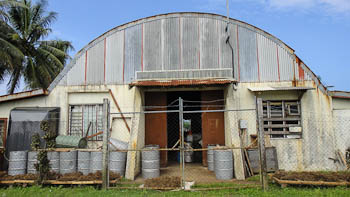
By the time the US entered WWII, the Japanese were already in the Solomon Islands and moving south towards Australia and New Zealand. To keep them from taking over all the western South Pacific, the allies established bases in the New Hebrides (now Vanuatu).
Santo quickly became the second largest US base in the Pacific, behind Honolulu, with more than 40,000 troops stationed on the island at one time and nearly 500,000 personnel spending time here. The island went from no paved streets to having five airfields, a seaplane base, three hospitals, ten small camps and thirty-two miles or roads in a very short time.
It was the last safe staging area to fight the Japanese and regain Guadalcanal in the Solomon Islands. Supplies came from the US via Hawaii, Fiji, sometimes NZ and Australia, to New Caledonia before arriving at Santo. At one point the large, protected Segond Channel held nearly 100 ships over 1,000 tons.
As the war raged on further north, Santo was safe and relatively comfortable except for the heat, humidity, flies and disease-carrying mosquitos.
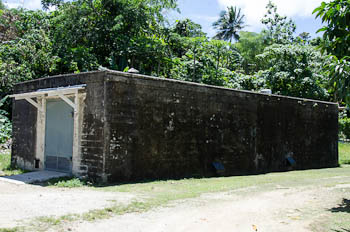
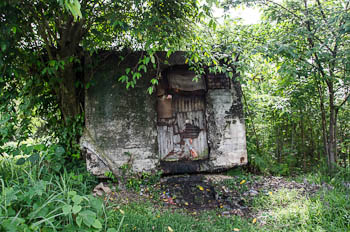
When the war ended there were quonset huts and fields filled with massive amounts of stuff. Planes, small boats, bulldozers, cranes, trucks of all sizes, forklifts, engines, bucket dredges, tires, iron girders and tons of earth-moving equipment had to be disposed of.
Some material was sold, but the majority was simply bulldozed into the sea at the entrance to Segond Channel. Thousands of tons of coral fill was pushed in on top of the submerged equipment which formed a ramp allowing more stuff to be dumped. Thus, Million Dollar Point was created.
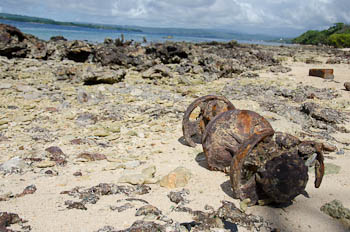
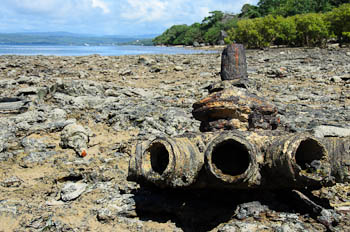
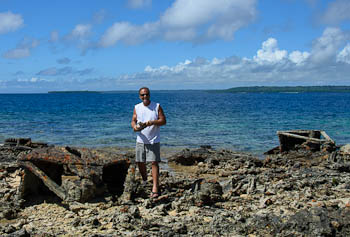
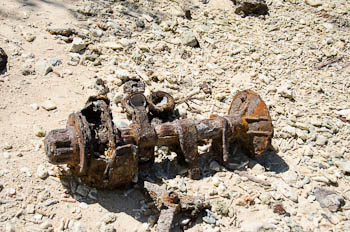
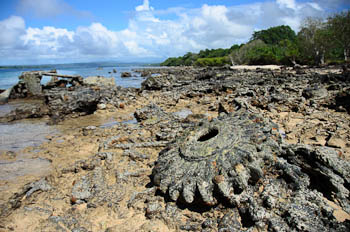
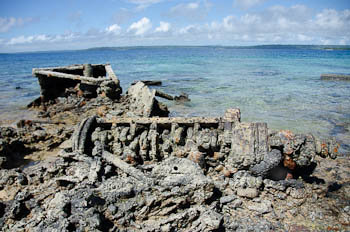
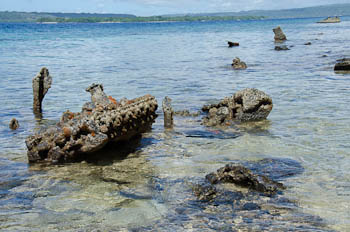
It seems an awful waste of perfectly good equipment. The story goes that when the war was winding down the Americans offered to sell it to the French at a very low price but the French declined thinking they would get it for free when the Americans left. So the Americans dumped it in the sea for spite.
Other explanations are that the equipment had been used and paid for, and it would have cost more money to ship everything back to the US. Also, any equipment returned to the US would have been sold on the open market, creating a glut that would not be appreciated by the manufacturers.
Probably the most realistic reason was that once the equipment had disappeared, the men in charge of it could go home. Everyone wanted to go home.
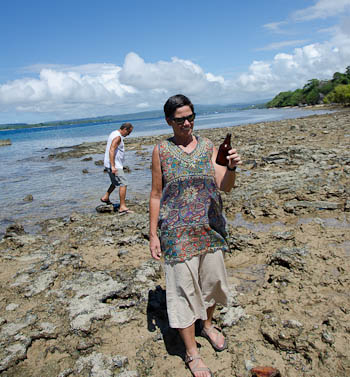
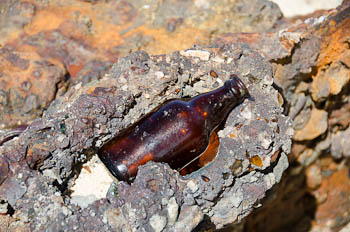
Taking anything from Million Dollar Point or the Coolidge is now illegal because of their National Park status. That said, coke bottles like this are for sale in Luganville for 1000 vatu ($10). Ours were given to us. One has Seattle stamped on the bottom, the other San Francisco.
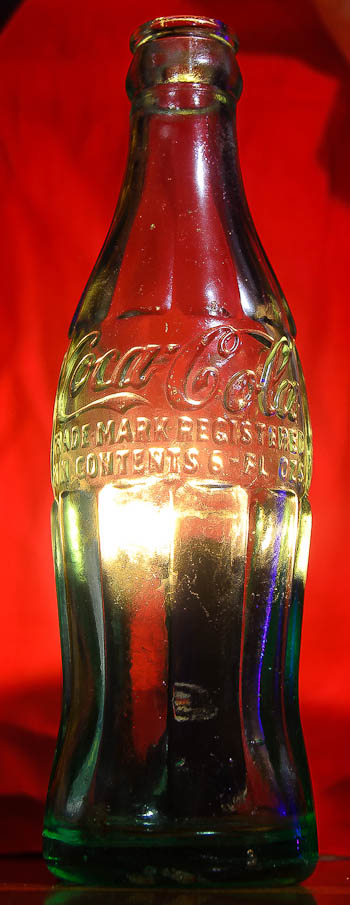
After wandering around the beach at Million Dollar Point Jim and I wanted to dive the area and see what was down there. Steve was less enthusiastic - he had envisioned diving in the South Pacific among beautiful corals and fish, not a bunch of junk.
David, James and Matthew of Santo Dive pick up divers daily from Aore Resort so we asked them about incorporating both into one day. No problem, they said. We'll do Million Dollar Point and Tutuba Point which is absolutely gorgeous with caves, caverns, swim throughs, beautiful corals and lots of fish with amazing visibility. Perfect!
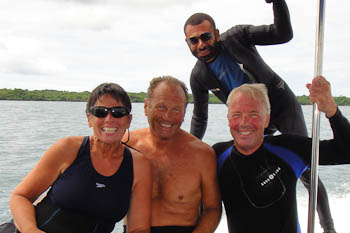
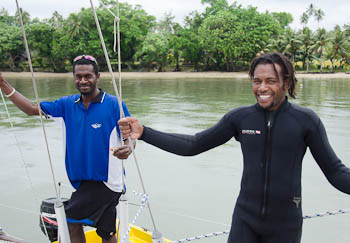
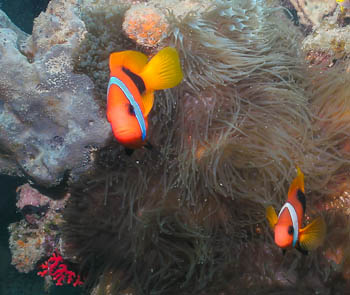
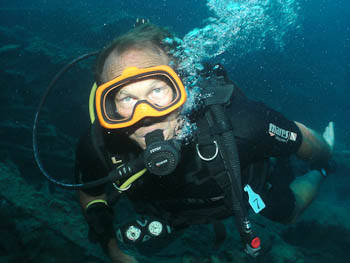
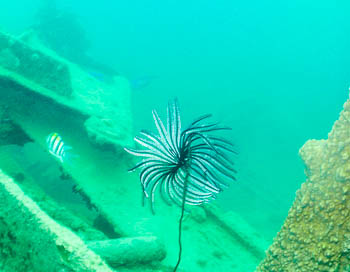
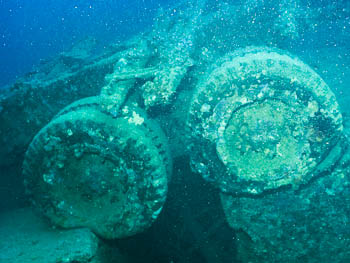
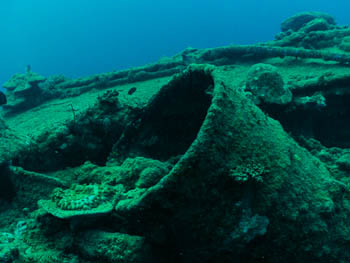
The ship El Retiro sunk while trying to salvage war surplus material from Million Dollar point. Now it's one more interesting part of the dive.
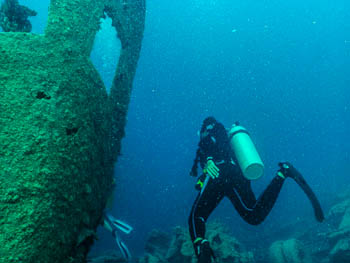
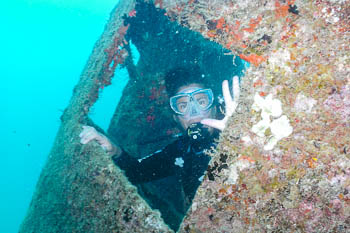
When we came upon this discarded forklift Steve had to crawl in and have a seat. I think he was beginning to like checking out all this old stuff.
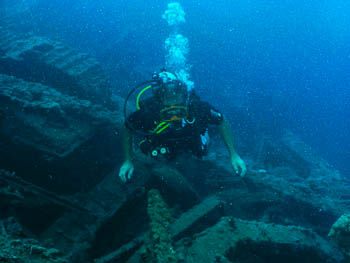
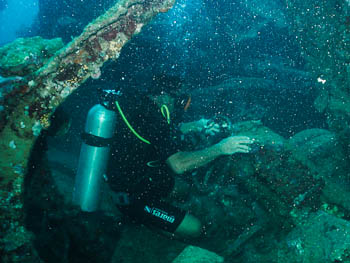
Jim, on the other hand, was thoroughly enjoying himself looking in, around and though as much as he could.
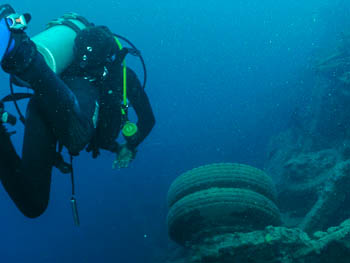
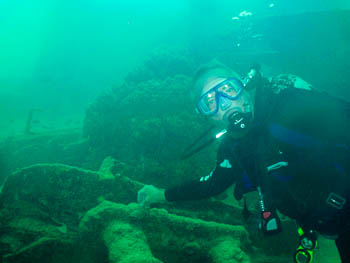
David showed us guns, helmets and lots of things we wouldn't have noticed on our own.
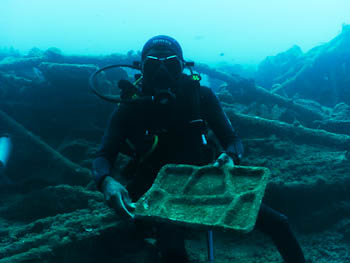
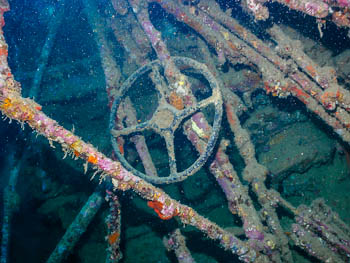
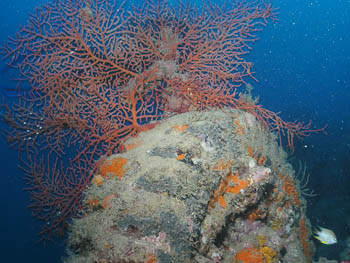
The President Coolidge was launched by the Dollar Steamship Line and christened by the president's wife on February 21, 1931 at Newport News, Virginia. Because of prohibition a bottle of champagne could not be smashed against the bow. Instead, Mrs. Coolidge used a bottle of water taken from the river which flowed through the former president's farm in Vermont.
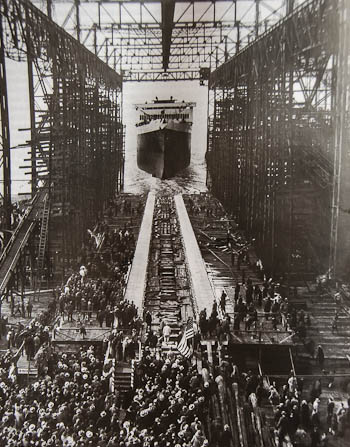
The President Coolidge was as stately and luxurious as any ship on the water, her art deco furnishings rivaled the best hotels of the time. Each room had a telephone and an air conditioner. There were two salt water pools, a gymnasium and even a theater with sound. She could carry 988 passengers and a crew of 385. Her home port was San Francisco and she was built and furnished extravagantly to take travellers, diplomats and businessmen across the Pacific to Asia with speed and in comfort.
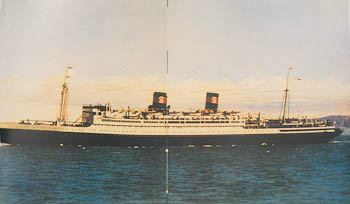
The Depression put a damper on luxury travel but the company received a subsidy from the US government to deliver mail. This helped but the maritime strikes of 1934 and 1935 forced the company into bankruptcy. After the President Coolidge had been attached by creditors, ownership was transferred to the Maritime Commision of the US Department of Commerce. Management of the ship was assigned to a private company and the name was changed to American President Lines. The ship was put into service on the trans Pacific run, visiting Hawaii, Hong Kong, China and Japan.
Beginning in 1939 the President Coolidge travelled between San Francisco and the Far East returning families, dependants and missionaries to the US. As the war neared it took US military personnel and equipment to bases and returned with evacuees, refugees and raw materials. The President Coolidge had several famous passengers including General Douglas MacArthur and the president of the Philippines.
On June 2, 1941, with the possibility of war almost a certainty, the President Coolidge, along with all the other APL ships, became part of the War Shipping Administration. They were still privately owned but now chartered by the government.
The luxurious liner was transformed into a transport ship to reinforce US bases in the Pacific. The opulent furniture and fixtures were removed or covered with wood, rows of bunks were added and a stateroom was converted to hold rows of toilets separated by 4'x4' sheets of wood. Guns were mounted on deck to, interestingly enough, supportive plates that were installed during the building of the ship.
She made her first run loaded with troops in January 1942 and her second in March. On October 6, 1942 she sailed from San Francisco packed to the walls with servicemen who had no idea where they were going.
History books and movies have taught us something about WWII in the Pacific. The Tom Hanks and Steven Spielberg mini-series, The Pacific, highlighted the fact that the marines on Guadalcanal were overwhelmed and waiting for Army reinforcements that did not arrive as planned. We were not told why.
It turns out that 5000 soldiers left San Francisco for Santo to be shipped out to the Solomons. But they travelled on a luxury ocean liner converted to a troop ship, not a military ship. The Navy had recently installed mines at the entrances of Segond Channel in Santo, unbeknownst to Captain Nelson of the President Coolidge. His instructions said nothing about mines, nor did the destroyer he met at the entrance. Apparently the Navy was very tight-lipped about the location, and even existence, of any mines and non-military ships were not privy to that information until the last possible moment.
Captain Nelson feared a torpedo attack from a Japanese submarine so took the clearest, fastest route into the harbor. As he entered a sign flashed: S T O P. He immediately reversed the engines but it was too late. The President Coolidge hit one mine and then another. With what momentum he had, the captain ran the ship ashore in attempt to save it and the crew. All but two of the 5,000 men made it to shore safely, but they left behind all their clothing, equipment, weapons and ammunition. The ship perched temporarily on a reef but when the stern filled with water the entire structure was pulled down and sank before anything, including trucks, tanks, medical supplies (including all the quinine the US had) and ammunition could be saved. It would be months before these solders had equipment again and were able to join the fight.
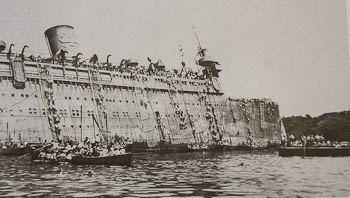
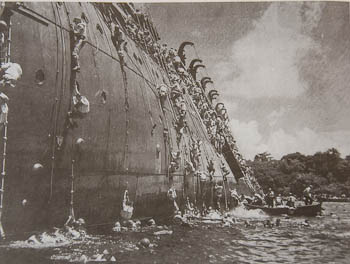
Concerned about our skills and controlling our buoyancy inside the ship, with all the silt, we decided to leave the camera behind. I wish we had taken it, what we saw was incredible! In one hold there were more jeeps than we could count. In another hold we came face to face with the cannon of a giant tank. From outside we peered in to see the row of toilets.
Alfred, the divemaster, took us though holds one and two and showed us many things, large and small. On deck he opened a barrel to reveal several pair of shoes. The leather was still soft! Because the Coolidge is a National Park, nobody is allowed to take anything. I think the divemasters move things around slightly when showing them to divers, but everything remains with the ship.
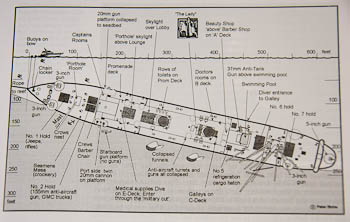
To dive the Coolidge contact Allan Power Dive Tours at +678 36 822. It's all they do.
To dive the Coolidge or Tucker shipwrecks or reefs including Tutuba Point and Cindie's Reef contact Santo Dive at +678 77 58082. These guys are great!
Santo, Vanuatu - Bundaberg, OZ with a stop at Chesterfield Reefs